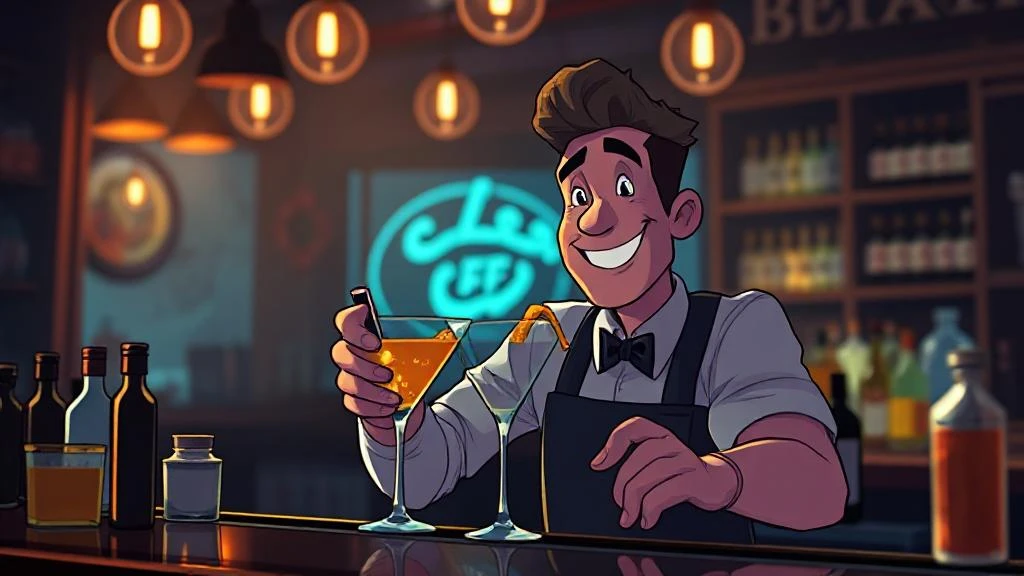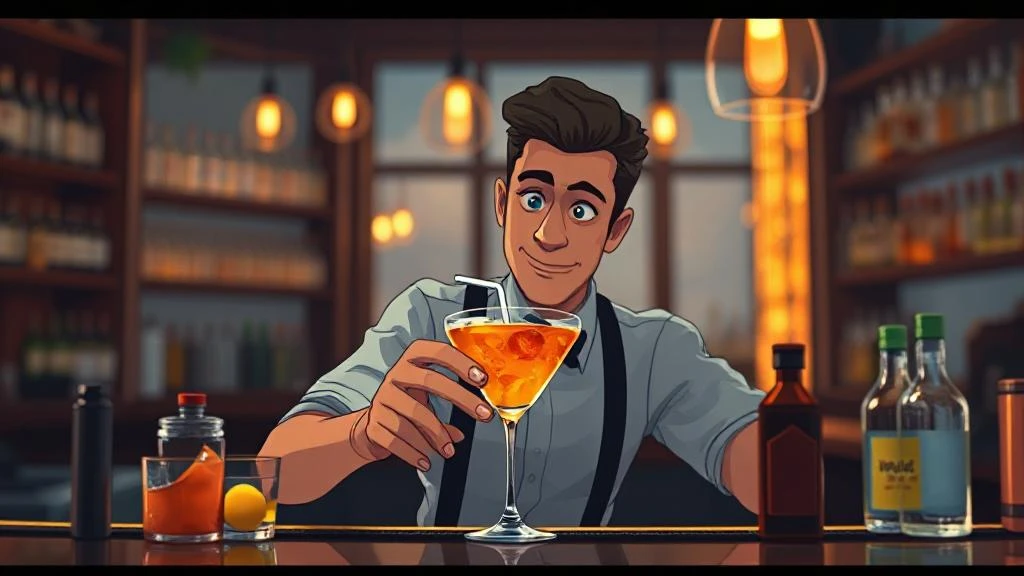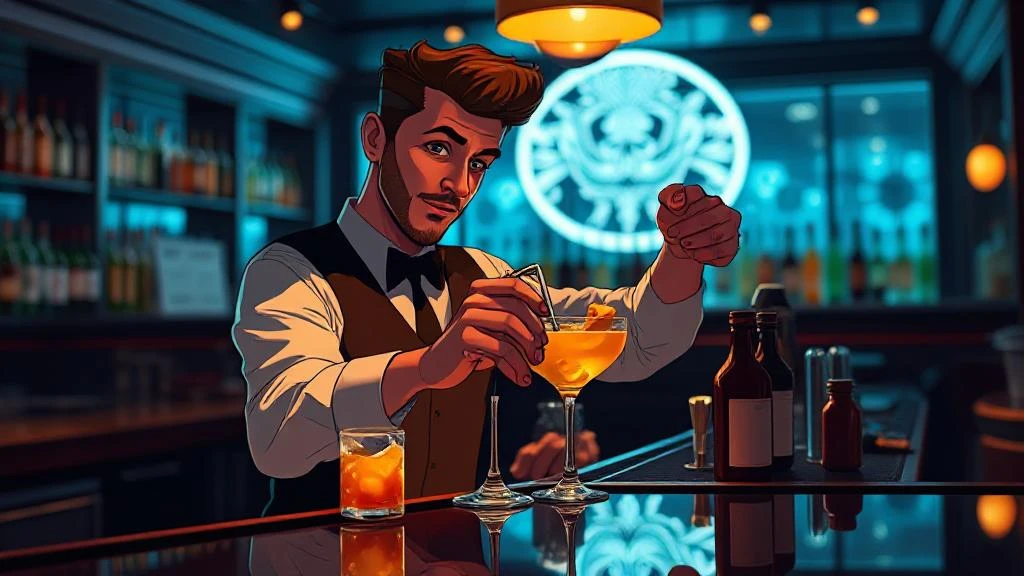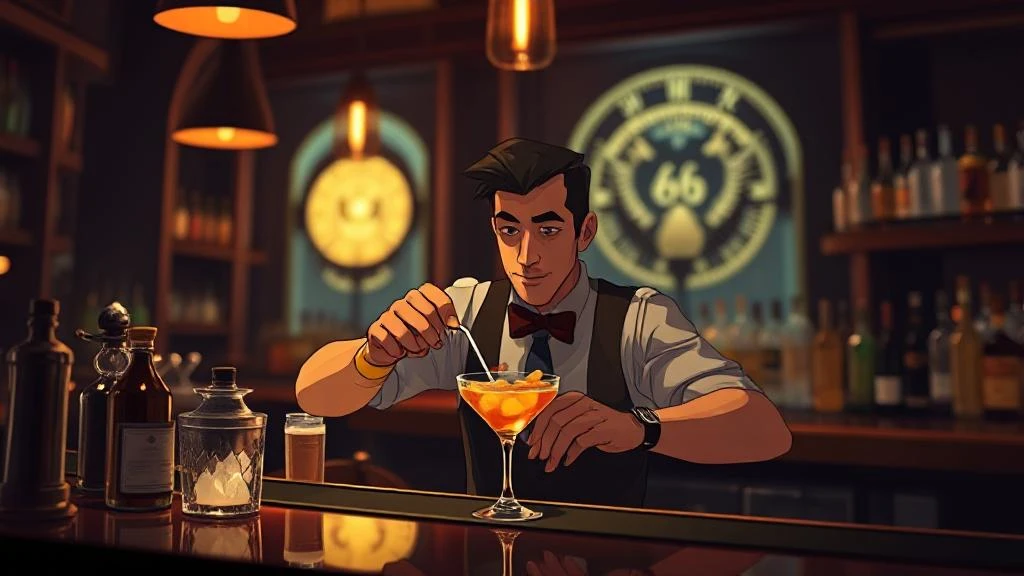Jeremiah P. Thomas (1830-1885), known to the world as “Professor” Jerry Thomas, stands as the undisputed father of American mixology and the first celebrity bartender in history.
This pioneering figure revolutionized bartending from a simple job into a respected creative profession through his groundbreaking work behind the bar and his landmark publication, “How to Mix Drinks or The Bon Vivant’s Companion” (1862) – the first cocktail recipe book ever published.
During his prime at the Occidental Hotel in San Francisco, Thomas earned an astonishing $100 per week – more than the Vice President of the United States at the time. His influence transformed drinking culture across America and elevated cocktail-making to an art form that continues to inspire bartenders worldwide.
Background & Journey
Born in Sackets Harbor, New York in 1830, Jerry Thomas developed his passion for mixology at a remarkably young age. At just 16, he began learning bartending in New Haven, Connecticut, where he discovered his natural talent for crafting and serving drinks.
His adventurous spirit soon led him to sea, first to Cuba and then around Cape Horn to California during the Gold Rush of 1849. While gold prospecting didn’t pan out, Thomas found his true fortune behind the bar at San Francisco’s El Dorado Hotel, where he began developing his signature style and showmanship.
Thomas’s career took him across America, working in prestigious establishments in New York, Chicago, St. Louis, Charleston, and New Orleans. His reputation grew with each move, and he even toured Europe with his solid silver bar tools, spreading American cocktail culture internationally.
Upon returning to New York City, Thomas operated four different saloons throughout his lifetime. His most famous bar on Broadway, between 21st and 22nd Streets, opened in 1866 and became the most celebrated drinking establishment in America, frequented by the elite of New York society.
Signature Style & Philosophy
Jerry Thomas transformed bartending through his unique combination of technical skill, theatrical flair, and creative innovation. His approach to mixology was revolutionary – he treated drink-making as a serious culinary art rather than merely pouring liquor.
Thomas was known for his spectacular showmanship, often juggling bottles and mixers while preparing drinks. He dressed the part of a distinguished professional, adorning himself with flashy jewelry and using bar tools embellished with precious stones and metals.
The Professor’s philosophy centered on quality, precision, and presentation. He believed cocktails should appeal to all senses – not just taste, but sight and smell as well. This commitment to excellence led him to meticulously document recipes and techniques, standardizing the craft for future generations.
Thomas valued innovation but respected tradition, often collecting regional recipes during his travels and refining them to perfection. His meticulous attention to detail and unwavering standards helped establish bartending as a respected profession requiring skill, knowledge, and creativity.
Signature Cocktails
The Blue Blazer
The Blue Blazer stands as Thomas’s most famous creation and a testament to his theatrical approach to bartending. Developed at San Francisco’s El Dorado saloon during the Gold Rush era, this fiery spectacle involves lighting whiskey ablaze and passing it back and forth between two mixing glasses, creating a dramatic arc of blue flame.
Beyond pure showmanship, this technique serves to warm and aerate the mixture while burning off some of the fusel oils, creating a smoother drinking experience. The Blue Blazer perfectly exemplifies Thomas’s belief that cocktail-making should engage all senses and create memorable experiences.
The Martinez
The Martinez, first published in the 1887 edition of Thomas’s guide, is widely recognized as the precursor to the modern Martini. This sophisticated blend of gin, sweet vermouth, maraschino liqueur, and bitters demonstrates Thomas’s skill in balancing complex flavors.
While contemporary martinis have evolved toward drier, simpler profiles, the Martinez reveals Thomas’s appreciation for rich, nuanced flavor combinations that were hallmarks of 19th-century drinking culture.
The Tom and Jerry
Though Thomas didn’t invent this warming holiday punch (evidence suggests it existed in the 1820s), he claimed credit for it and undoubtedly popularized it across America. The Tom and Jerry features a rich batter of beaten eggs, sugar, and spices, mixed with hot milk and spirits – typically rum and brandy.
This labor-intensive but deeply satisfying winter warmer became so associated with Thomas that specific ceramic sets were produced for serving it. The drink’s popularity waned in the mid-20th century but has enjoyed a revival among craft cocktail enthusiasts celebrating Thomas’s legacy.
Industry Contributions
Jerry Thomas’s most significant contribution to the cocktail world was undoubtedly his 1862 book “How to Mix Drinks or The Bon Vivant’s Companion.” This groundbreaking work was the first cocktail recipe book ever published and established a framework for the profession that endures today.
The book contained the first written recipes for many classic cocktails and categorized drinks by type (sours, fixes, flips, etc.), creating a taxonomy that helped define the field. Through multiple editions, Thomas continued refining and expanding this essential reference.
Beyond his written work, Thomas elevated bartending from a service job to a respected creative profession. His showmanship and technical skill demonstrated that mixology required talent, knowledge, and artistry. His travels spread American cocktail culture nationally and internationally during a time when American cuisine was generally considered inferior to European traditions.
Thomas also pioneered the concept of the celebrity bartender, paving the way for future generations of mixologists to achieve recognition for their craft. His influence extended beyond drinks to bar culture itself – he helped establish standards for professional conduct, environment, and presentation that transformed the American drinking experience.
Related Industry Figures
While Jerry Thomas stands as the towering figure of 19th-century American bartending, he was influenced by and connected to numerous other notable figures in the early cocktail scene.
Harry Johnson, a contemporary of Thomas and fellow bartending pioneer, produced his own influential guide, “The New and Improved Illustrated Bartenders’ Manual” in 1882. Johnson’s approach was somewhat less theatrical than Thomas’s but equally focused on professionalism and precision.
William “Billy” Boothby, who worked during the late 19th and early 20th centuries, helped carry Thomas’s legacy forward. His “The World’s Drinks and How to Mix Them” (1908) built upon Thomas’s foundation while adapting to changing tastes and new ingredients.
In more recent times, cocktail historian David Wondrich has been instrumental in reviving interest in Thomas’s work. His book “Imbibe!” (2007), which won the first James Beard Award for a cocktail book, explores Thomas’s life and recipes in depth, introducing a new generation to the Professor’s pioneering contributions.
Legacy & Impact
Though Jerry Thomas died in relative obscurity in 1885, his influence on cocktail culture has proven remarkably enduring. After decades of neglect during Prohibition and its aftermath, Thomas’s work experienced a dramatic revival in the early 21st century as part of the craft cocktail renaissance.
Modern bartenders have rediscovered his recipes, techniques, and philosophy, finding them remarkably relevant to contemporary tastes. Establishments worldwide now celebrate Thomas, with some bars even named in his honor.
The Jerry Thomas Project in Rome, Italy, stands as one of the world’s most acclaimed speakeasy-style bars, paying homage to the Professor through meticulously researched historical cocktails. In the United States, numerous establishments feature Thomas’s creations, particularly his showstopping Blue Blazer.
Beyond specific drinks, Thomas’s broader legacy lives on in the professionalization of bartending. Today’s mixologists, with their careful technique, creative innovation, and respect for tradition, are the direct heirs to Thomas’s pioneering approach to the craft.
Join the Legacy
Today, you can connect with Jerry Thomas’s enduring legacy through various channels:
- Visit craft cocktail bars specializing in historical recipes, where modern bartenders pay homage to the Professor’s techniques
- Explore the annual Tales of the Cocktail festival in New Orleans, which celebrates pioneering figures like Thomas
- Read David Wondrich’s award-winning book “Imbibe!” for a deep dive into Thomas’s life and work
- Follow contemporary bartenders who continue to innovate while respecting the foundations Thomas established
For those seeking to learn more about cocktail history and Jerry Thomas’s contributions, numerous resources are available online through cocktail heritage organizations and spirits education platforms.
A Timeless Toast
Jerry “The Professor” Thomas may have lived and worked in the 19th century, but his influence resonates powerfully in today’s vibrant cocktail culture. From his pioneering book to his theatrical techniques and carefully crafted recipes, Thomas established the foundations upon which modern mixology continues to build.
The next time you enjoy a meticulously prepared craft cocktail, remember to toast the visionary bartender who first transformed drink-making from a simple service into a celebrated art form. In every balanced flavor profile and theatrical presentation, the spirit of Jerry Thomas lives on.











